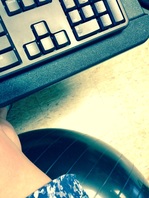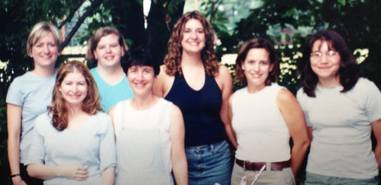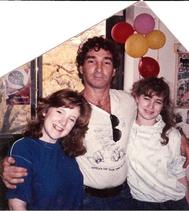At a conference this Spring a colleague told me that the best thing she has done is replace her chair with an exercise ball, and that she lost 5 inches off her waist as a result. I ordered an exercise ball as soon as I returned. Here are my thoughts.
I didn’t lose 5 inches off my waist. Or even one inch. But I am still happy with the decision.
I did a fair bit of homework. I read the following articles on the possible benefits (or lack thereof) of using an exercise ball as a desk chair.
Lifehacker
NY Times
Women's Day
Around the same time that I replaced my chair, our university sent around a message saying that they would not pay for alternative work stations and that if you wanted to use an exercise ball, you needed approval from your supervisor. I hadn’t considered asking the department to pay for it, and I do recognize that if I fall off, I’m not going to sue the university for damages.
I read about how to pick the right size. I’m short, but I did go up a size from what I would use for actual exercise, and I’m happy I did.
I bought this burst resistant ball. The pump was easy to use (not fancy!), and it was reasonably priced.
I bought it in black. Thus, some people walking by didn’t even notice the change, and sometimes I would talk to a colleague for a minute or more before s/he noticed that I was sitting on a ball. It has sparked conversation with colleagues, but never in a bad way.
I like it. Most of the time I find it really comfortable. I do pilates regularly, so that may help me know how to sit properly on the ball. Occasionally I start to feel lower back pain from sitting on it, particularly days where I have few meetings and thus am at my desk all day, but when I do, I switch back to my chair that day and the pain goes away within an hour. Most days I have one or more meetings so I either go elsewhere to meet or move from my desk/ball to my table/chair for the meeting and have no issues.
I’m a fidgety, hard-to-stay-still person. I think the ball helps center me in some way.
The biggest change I’ve noticed is that I don’t get tired in the afternoons. I used to find that in the 3:00 – 4:00 range I would get very sleepy at my desk. That almost never happens since the switch (and I’m not sleeping more, and in fact, on days that I work at home, I do get tired in the afternoons). I think the fact that my body is constantly engaging in micro-movements to stay balanced helps ward off sleepiness.
Because I generally like balance balls, I can play with how I sit. I often like to sit with my legs crossed and only one foot on the ground to increase the challenge. I’ve wobbled here and there but never felt like I was going to fall off.
Every once in a while, I close my door and bounce. Or more often (but still relatively rare), close my door, and lie back and stretch over the ball.
It’s a small change. I am really not losing weight or noticing a difference in my body size as a result. But I’m happy with the change, and am glad to have made it.
“The post I replaced my office chair with an exercise ball first appeared on Eva Lefkowitz’s blog on August 22, 2014.”




 RSS Feed
RSS Feed
